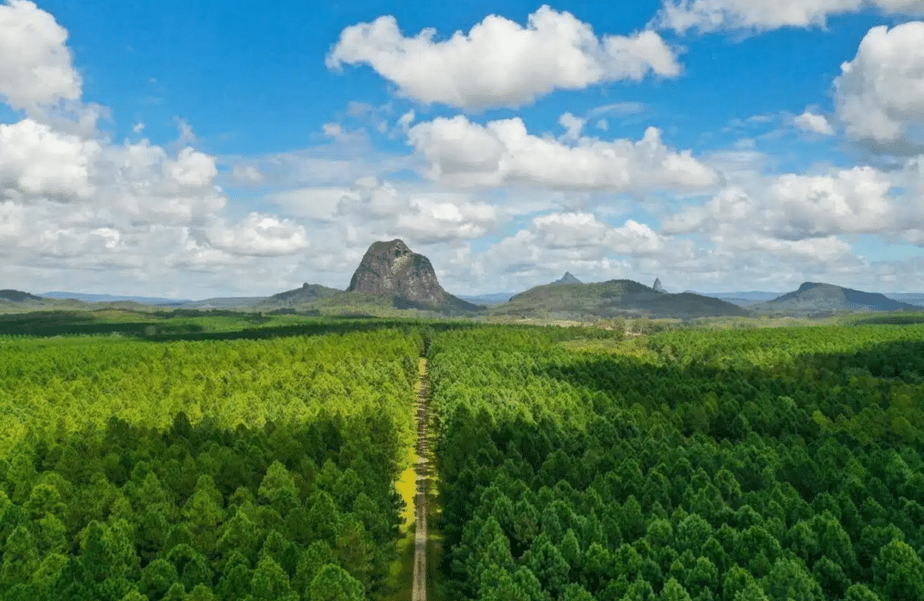
Queensland-based timber provider HQPlantations is predicting and detecting bushfires across 288,000 hectares of its pine forests with cameras, satellite imagery and artificial intelligence.

Credit: Blueys photography via HQPlantations Facebook
The company entered a commercial agreement with Sunshine Coast-based vendor exci, formerly called ‘Fireball.International,’ in mid-2022 after a one-year trial of exci’s AI-Assisted Fire Management Tool in its coastal plantations.
“The trial period straddled perhaps the quietest fire season in about 20 years,” HQPlantation’s corporate fire manager Andrew Dunn told iTnews.
“But the exci AI software detected fires – from smoke – and it was enough to convince us that it had a lot of potential in the fire detection space.”
As well as detecting fire signatures like smoke and heat, exci predicts when and where they’re likely to occur with machine learning models.
Using AWS S3, Amazon Elastic Kubernetes Service and other AWS services, exci trains its models on over 2.5 million camera images – from its Australian and North and South American partners – and 30GB of satellite data every day.
Satellite images are unable to detect fires; lower earth orbit satellites don’t continuously point at the same forests and geostationary satellites don’t have the resolution. Instead, satellite images are augmented with camera images to train exci’s fire prediction models.
Dunn said that 360-degree rotating cameras connected to exci – mostly stationed on watch towers – now cover 90 percent of its 320,000 hectares of plantations, which are scattered across Queensland from Passchendaele near the NSW border to Kuranda northwest of Cairns.
“We have numerous recorded instances where exci’s AI detection has been the primary source of a fire detection,” Dunn said.
“It’s [exci] not a solution on its own; we will always retain a dependency on staffed fire towers on high fire danger days when there is a lot of smoke in the air and visibility is low, and our own fire camera observers will continue to monitor screens during business hours.
“The AI detection particularly comes into its own after hours, into the evening and in the early morning, as a lot of our fires start overnight; largely from dumped, stolen cars.
“We have also found exci’s detection images very useful for fire investigation purposes as it provides an ignition time, details whether the fire was a single or multiple ignitions, and informs us on fire behaviour.”
HQPlantations has a fleet of 80 4WD fire fighting vehicles, including 12 tankers and more than 250 trained fire fighters among its employees and contractors.
Using Amazon Simple Notification Service and Amazon Simple Email Service, exci sends alerts to the frontline responders within two minutes of smoke detection.
Expanding coverage to the final 10 percent of its plantations and investing in more cameras “is the subject of a current analysis,” Dunn said.
“The majority of our key plantation areas are covered, some remote areas are not; there is scope at Kalpowar in central Queensland and potential for some more cameras in Nothern Queensland.
“With increasing risk in Southeast Queensland, we are also exploring further opportunities to triangulate fires across these estates with additional cameras.”
Speaking at AWS re:Invent in Las Vegas in December, exci co-founder and CEO Christopher Tylor said that exci’s partners also included state fire services, powerline and agriculture companies but that timber providers were the bulk of its customers.
“Mainly we protect forests and plantations because they can’t be insured…they can only be self-insured.”
The global increase in bushfires has made timber insurance premiums spike in both Australia and the US, leaving plantation companies no other option but to invest in self-insurance through fire response and detection capabilities.
“They [timber companies] need to have an early warning system in place because it takes 20 to 40 years to grow wood; it can be destroyed within two days of a fire; they need quick responses before the fire gets out of control.”
Jeremy Nadel attended AWS re:Invent 2023 in Las Vegas as a guest of AWS.









